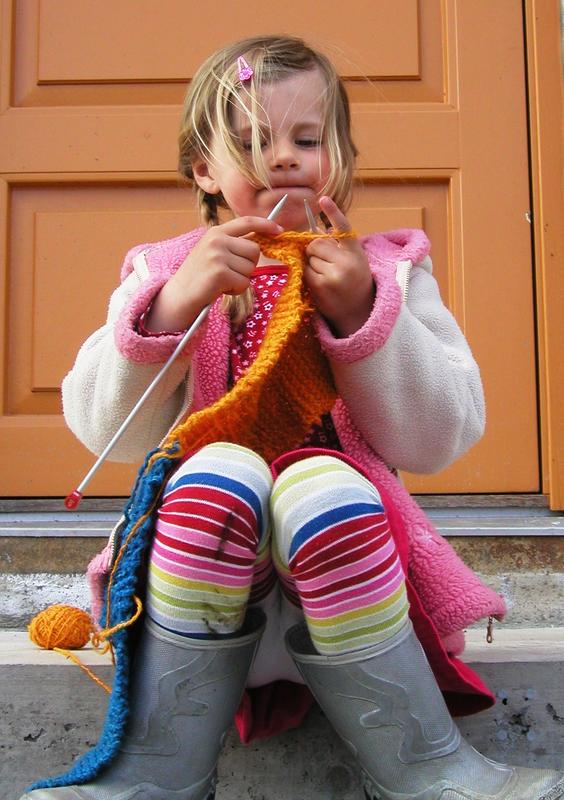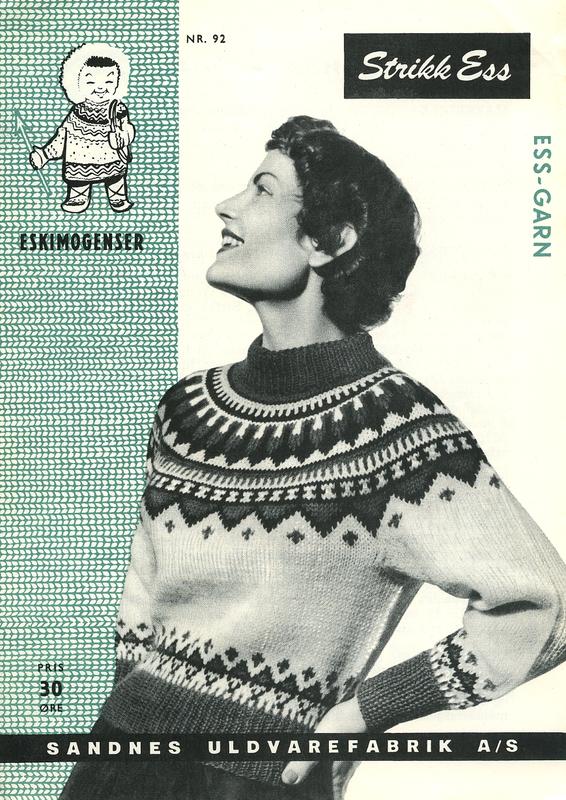-
She just learned to knit, 2004 Birte Sandvik / Norsk Folkemuseum
The first part of the exhibition shows some of the oldest pieces in the museum’s collections. Many are of the opinion that Norwegians have been knitting since the Viking Age, while in fact we were some of the last to begin using this technique in Europe. The first knitted pieces of clothing in Norway were so-called “night shirts”, a sort of underwear, knitted in one color with fine silk yarn, with floss on the inside. These were exclusive garments used by the upper class. They are, however, so old and fragile that it is not possible to exhibit them.
The most numerous types of knitted garments from the 1700s in the museum’s collections are mittens and stockings. Knitting became more widespread in the middle of the 19th century. It was at this time the first two-colored sweaters were made, for example in Setesdal and Fana. The exhibit shows examples of these rural types of knitting, in addition to knitted garments from urban areas.
- 1/1
Two little girls with their nanny, knitting. 1935. Fritjof Arentz / Norsk Folkemuseum
There is samples from every decade up until today, including “Hønsestrikk” (Hen-Knitting – a feminist knitting fashion in the 70s), the Per Spook weater and the Skappel sweater. The exhibit also shows various knitting implements, such as chatelaines, yarn hooks and knitting needles
-
Unn Søiland Dale / Norsk Folkemuseum
Unn Søiland Dale
The second part of the exhibition shows some of the most well- known knitted pieces made by the designer Unn Søiland Dale. The museum was in 2012 given 150 knitted garments designed by her, among others Snøkrystall (Snowflake), Eskimo and the iconic “Marius” sweater. The latter (last one) was inspired by traditional Setesdal sweaters and was launched in the 1953 film “Troll I ord”.


